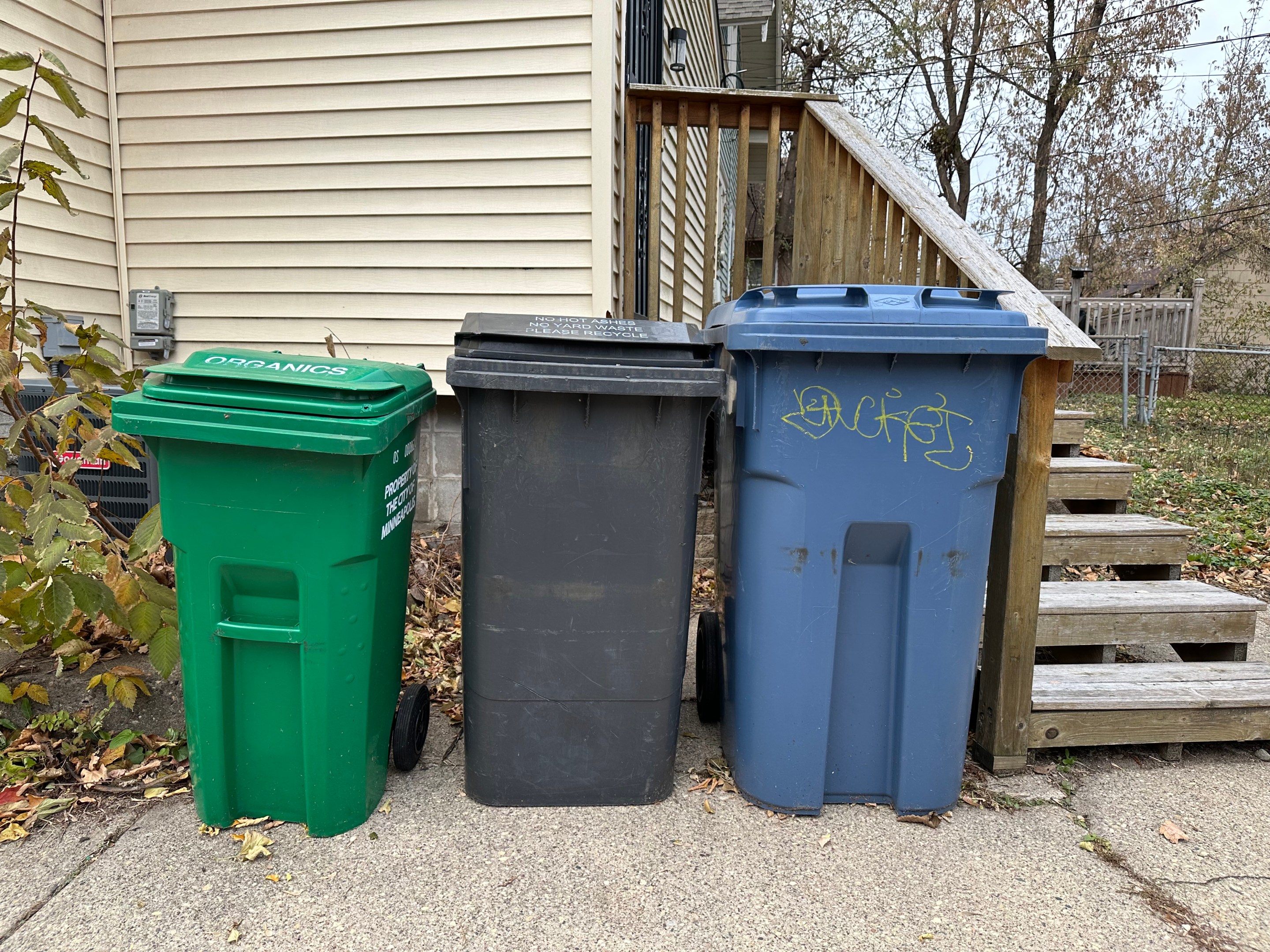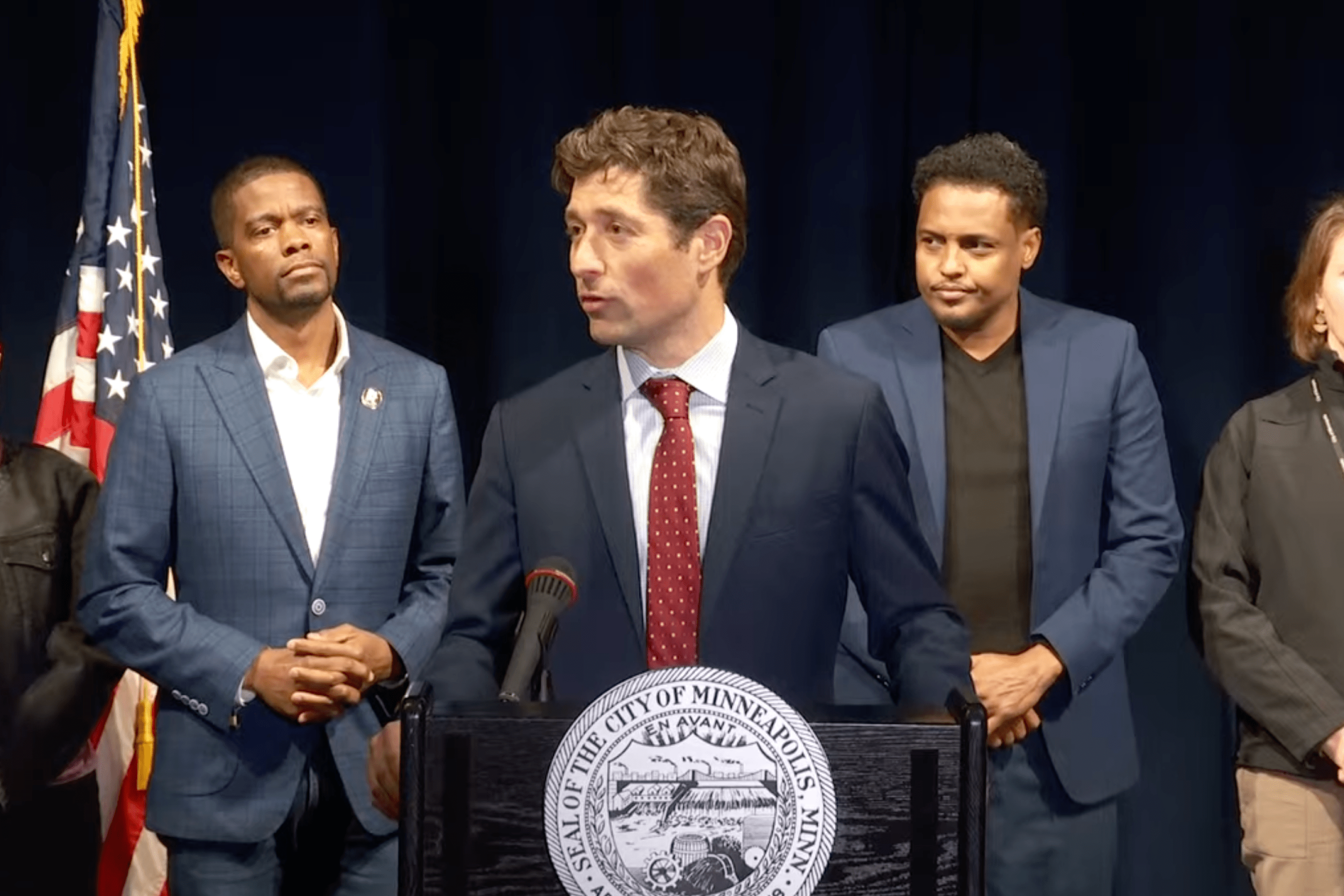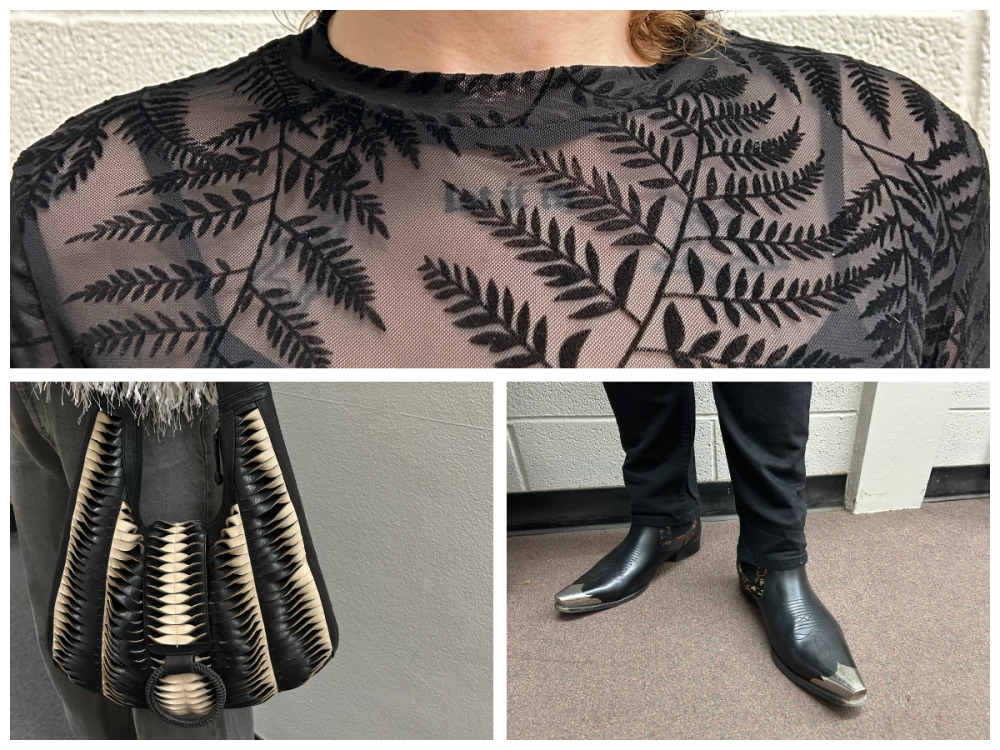At the Recycling and Energy Center in Newport, Minnesota, trash tells a story.
On this sunny April morning, the garbage pile on the tipping floor (so called because that’s where the trucks tip out their contents) is relatively tame—towering, but occupying just a fraction of the huge warehouse space. In a few months, the mound will expand to several times this size; the Newport center is where trash from the State Fair, hundreds of tons of the stuff, is delivered each year. At other intervals, the pile will reliably swell again, with plastic pumpkins and cheaply made costumes in October, and then during the holidays in December, when residents toss out heaps of wrapping paper, packaging, and food.
Ramsey and Washington County are always trying to find ways to keep that trash pile as small as possible, diverting waste from landfills with a recycling recovery program and a new no-cost option that lets residents recycle mattresses. And that’s where a pair of robots, located upstairs from the tipping floor in a small office-like room, come into play.
The MAX-AI optical sorters, towering taller than every person in the room, are part of Ramsey and Washington’s pioneering, AI-powered compost-sorting initiative. The robots and their rotating mechanical arms (they don’t have names yet; I asked) are trained to snatch biodegradable green compost bags from the conveyor belts transporting trash throughout the center, and each is capable of completing 25 to 30 picks per minute.

“Once this has achieved full rollout, it will be one of the largest programs of its kind,” says Annalee Garletz, food scraps pickup program supervisor.
That’s important, because Minnesota, and especially the Twin Cities, has a tremendous trash problem. More than 3 million tons of trash are generated in the metro each year, and that figure is growing, according to the The Minnesota Pollution Control Agency, which estimates residents will create 20% more trash annually by 2042. At that rate, local landfills will quickly run out of space.
The MPCA has a goal of recycling and composting 75% of Minnesota’s solid waste by 2030, and that will require a combination of short- and long-term strategies that include encouraging residents to reduce consumption, reuse goods whenever possible, and repair and restore broken items rather than throwing them away.
Organics recycling, which some Minnesota communities have been offering in various forms for years, is an important piece of that puzzle. Now, faced with a worsening climate crisis and an increasingly unmanageable amount of trash, more municipalities are making it an option for residents.
Minneapolis’s municipal organics collection story starts in 2008, and, “Like many things in Minneapolis, it started because of resident interest,” says Kellie Kish, the city’s recycling coordinator.
At the time, Minneapolis Climate Action (then called Linden Hills Power and Light) was applying for a grant for a community anaerobic digester, the system that breaks down organic matter to make renewable natural energy. They needed to know how much organic matter was available in the community to feed it. Minneapolis agreed to perform organics collection services for the pilot program, and Hennepin County helped with funding and educational support.
The pilot expanded to East Bde Maka Ska the next year, and in 2010 grew to 10 additional neighborhoods. The city also added more organics drop-off sites, after finding that residents from more than 20 neighborhoods were traveling to a single site in Pearl Park. In 2015, due in part to a resolution from Hennepin County, Minneapolis established a citywide curbside organics recycling program, making it among the first cities of its size in the United States to do so.
There are no AI robots involved in sorting here; in Minneapolis, waste management experts opted for a much more hands-on approach—literally.
“We never transitioned from two people on a truck with the little flippers to the automated-arm trucks that many communities have,” Kish says. “Our staff are physically touching every cart; they have the ability to look inside every cart and then leave the carts if they’re finding contamination.”
To this day, Minneapolis reports impressively low contamination rates from improperly sorted non-compostables, with an average rate of less than 1%.
“We use Minneapolis all the time as a very good example of the way to establish a program,” says Nora Goldstein, editor and publisher of the organics recycling publication BioCycle. “There are a couple of elements in there: One is that it’s baked into the rate that residents pay who get service from the city.”
The opt-in nature is another factor: Everyone may be paying, but you have to contact the city to get a little green organics cart.
Goldstein also supports starting with drop-off service before moving to curbside pickup, and Kish agrees: “You get those early adopters who really want to participate and give them the opportunity to do it, and they will be your champions in encouraging other people to jump on board.”
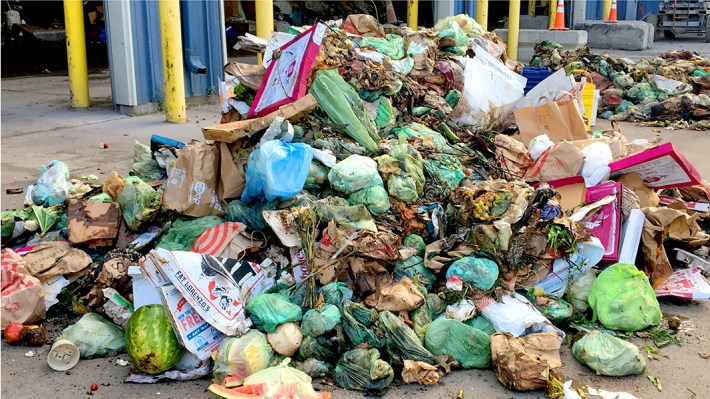
Plus, she grins, when you find yourself in front of the city or the county to ask for money to add staff, or buy more carts, or get more trucks on the road, “you’ve got residents who’ll vocally support the program.” Other Hennepin County municipalities, including Richfield, have taken a similar approach—starting with drop-off sites in 2018, and eventually offering curbside collection, for which every property in Richfield is charged a flat fee.
(In fact, beginning earlier this year, everyone in Hennepin County has to pay for organics recycling, a change that came as a surprise to many residents; the county recommends checking with your hauler or city recycling coordinator for information specific to your area.)
The Ramsey/Washington program runs a little differently. “This program uses a co-collection model to collect food scraps, meaning residents put their food scrap bags in the same bin as their trash,” says Garletz.
The idea, she explains, is that this method is environmental, efficient, and equitable. There are fewer trucks on the road than there would be with a separate bin program, and it’s accessible because anyone can put the little green bags—available for free, in bundles of 60—in their existing trash bin.
When the bags get to the Recycling and Energy Center, they’re sorted out by the AI-powered robot arms, which detect compost bags based on color. They’re still learning, which is why you’ll see Sprite bottles and other green-hued disposables mixed in with the compost bags; mistakenly sorted items are fed back through the system.
The program officially launched last October, with Cottage Grove, Maplewood, Newport, and North St. Paul participating. Just last month, the organics program became available to residents in Great Cloud Island Township, Landfall, Oakdale, St. Paul Park, and Woodbury.
“We’ll continue to be rolling it out to different communities as we go,” Garletz says, with a hope that 10% of residents will sign up during year one. Officials’ ultimate goal, once this program has expanded to all of Washington and Ramsey County, is to have 40% participation, which would equate to about 30,000 tons of food scraps annually.
Getting to that 40% figure will take time, but it can be done. Since launching in October, almost 10% of residents within participating communities have signed up. Over in Minneapolis, Kish says that 53% of households are participating in the organics recycling program, and that figure gets a bump each year when the city sends out its annual mailer. “Probably the most important thing is that we do a lot of ongoing, continued education and outreach,” Kish says. (Did you know you can put greasy pizza boxes in your green Minneapolis organics bin? Or used tissues and paper towels, even toothpicks?)
The city works closely with neighborhood and community groups to get the word out about the availability of composting citywide, and they often point people to Hennepin County’s green partners grant program, through which neighborhood orgs can get money to promote environmental behavior changes.
Some groups take the task more seriously than others. If you’re a member of the neighborhood group that Kish says filed an information request for homes that were participating in organics recycling, and then printed out a map to display your findings and convince non-participants to sign up, I both respect and fear you.
“I do think public shaming works way too well sometimes,” she laughs.
The problem of organic waste isn’t just that it’s filling up landfills. It’s also what it does once it’s in our landfills.
“Almost every month, there’s a new study on how challenging methane emissions are for landfills,” says Cole Rosengren, lead editor of the waste and recycling news source Waste Dive. “And what causes the methane is organic material. It’s food waste.”
You might (correctly) associate methane with cow farts—livestock production is the leading source of methane emissions in the U.S. (though cow burps are actually more to blame), followed by the energy sector. It’s estimated that landfills are the third-largest source of methane emissions in the country, and there’s growing evidence that those emissions are actually underreported, with more than half of U.S. landfills in one recent survey emitting detectable methane plumes.
Methane is a “superpollutant,” and its warming power once it’s in the atmosphere is roughly 80 times stronger than carbon dioxide. That makes prioritizing and promoting organics collection a valuable asset in ongoing efforts to address the climate crisis.
So why isn’t every city in America making a concerted push to promote organics recycling? Cost is, unsurprisingly, one factor.
“Food waste is not the easiest to transport long distances. It’s already a little expensive. It’s wet, it’s heavy, you don’t want to be trucking the stuff two states over to compost it,” Rosengren says. “You want to have a local option. And that’s another challenge, is how to build that infrastructure.”
In 2018, Hennepin County announced a plan to do just that, proposing to build an anaerobic digester next to the Brooklyn Park Transfer Station. The plan, estimated to cost about $45 million, puttered along for years. It ultimately stalled out in December 2023, with the county citing shifting market conditions—inflation, supply chain disruptions, and labor costs—and the fact that the region has more composting sites than it did in 2018, with other public and private groups developing anaerobic digestion facilities of their own.
“Minnesota’s considered a state that’s been ahead of the curve trying to limit landfills for a long time,” Rosengren says. “But even still, they couldn’t get plans through to build an anaerobic digester that would have taken some of this material, because of cost.”
But composting can save cities some money in the long run, he explains, as disposal costs at landfills are only going up. When it comes to diverting food waste, “It doesn’t always save you money right away, because organics are not always cheap, but in the long run it will, if the local landfill is filling up, or the incinerator is at capacity,” he says.
In Minneapolis, where many are calling for the expedited closure of the contentious HERC garbage-burning facility, diverting organics will continue to be especially important.
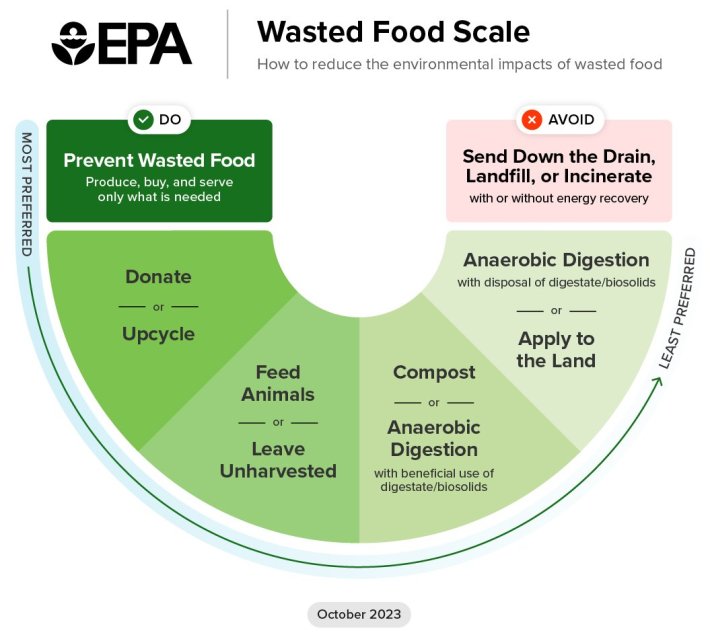
But the short answer is that, no, we can’t solve our waste or emissions problems through composting alone. It’s just one piece of the puzzle, and many in the waste industry think we need more programs to help divert organic waste: by providing financial kickbacks for folks who participate in edible recovery programs, for example, donating food that’s nearing the end of its shelf life and will otherwise go unused.
Goldstein at BioCycle points to “pay-as-you-throw” or unit-based pricing programs, which treat trash services like gas or electricity or any other utility. Households pay a variable rate that changes month to month depending on how much trash they create. These programs do exist, though Goldstein says they often don’t go far enough; if the difference between a 15- and a 30-gallon trash bag is under a dollar, is that going to convince U.S. households to toss less?
The good news is that the numbers are going in the right direction. The number of U.S. households with access to food waste collection grew by 49% between 2021 and 2023, from 10 million to 14.9 million, according to BioCycle’s most recent biannual report. That’s in part due to a recent California law requiring every jurisdiction in the state to provide organic waste recycling services, but Goldstein says it’s still a reason to feel positive.
She adds that as people start composting, there’s an amplifying effect. When you see how much food you’re throwing away—and in this economy!—you’re also likely to adjust your purchasing habits accordingly.
“When people start to realize how much food they’re throwing away, they actually start buying less and using more,” Goldstein says. “That piece should never be divorced from this conversation, because they do go hand in hand.”
